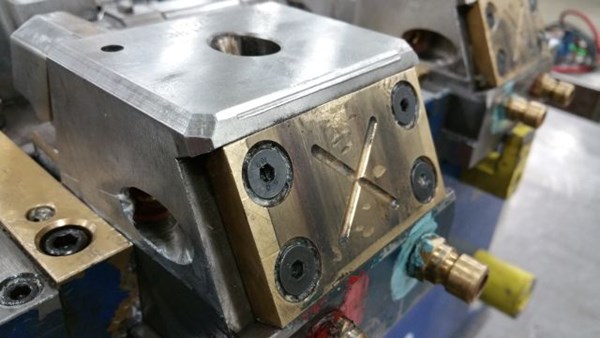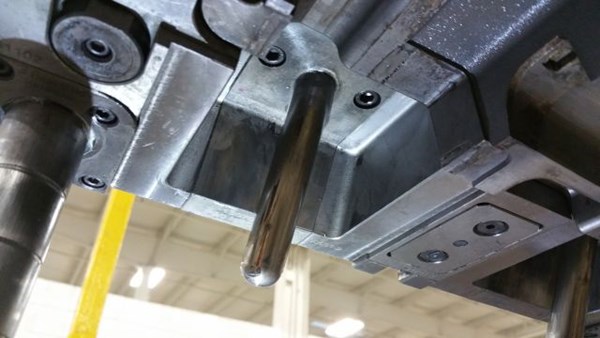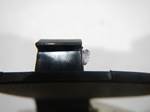Flash Free Molding: It’s about Cavity Surface Area
Randy takes a look at mold areas that can contribute to flash with deflection perpendicular to the machine’s clamp force.

Slide lock angle with wear plate.
Today I’d like to discuss areas of a tool that can contribute to flash with deflection perpendicular to the machine’s clamp force. First, the most important thing to understand is the amount of plastic pressure the tool and components will experience. This tends to be underestimated as we assume steel is stronger than plastic. In terms of its physical properties it is, however, that is not always the case when pressure is part of the equation.
Laminated inserts, inserts with plenty of cavity surface area, cavity surface area on slides and mold blocks are options to consider when designing for tool deflection in the perpendicular direction. (Hydraulic cylinders are another factor we’ll cover in a future blog because it involves more than deflection.) It comes down to the cavity surface area with inserts and laminated inserts. The more cavity surface area, the more you need to focus on that area.
I had a tool with laminated inserts to form rib details that would actually deflect the side of the mold 0.030. This particular tool had a support plate, so we added large dowel pins to the cavity and support plates to reduce defection.
With split inserts and flash, I’ve seen toolmakers try to tighten the by beating them in and out. Every plastic has a flash point that will allow an insert to fit without beating it. So evaluate the tool for possible deflection.
You must focus on cavity surface area with slides and lock angles too. Especially if the lock angle and mold base are adequate to prevent deflection. Inserted lock angles are more vulnerable to deflection. However, I have seen lock angles in the solid that looked very robust, but were not able to prevent deflection, which resulted in flash on the part.
In another example, a thick plate was added to the side of a large tool with many bolts because it was deflecting 0.012 and causing flash on the part.
Consider this: if a slide was spotted true net, the lock angle timed perfectly and the tool was robust enough to prevent deflection, zero pre-load would be needed. So, if you have a slide that needs excessive pre-load, you are fighting deflection and will be at risk for wear due to mechanical friction on the lock from heavy pre-load.

Inserted slide lock.














